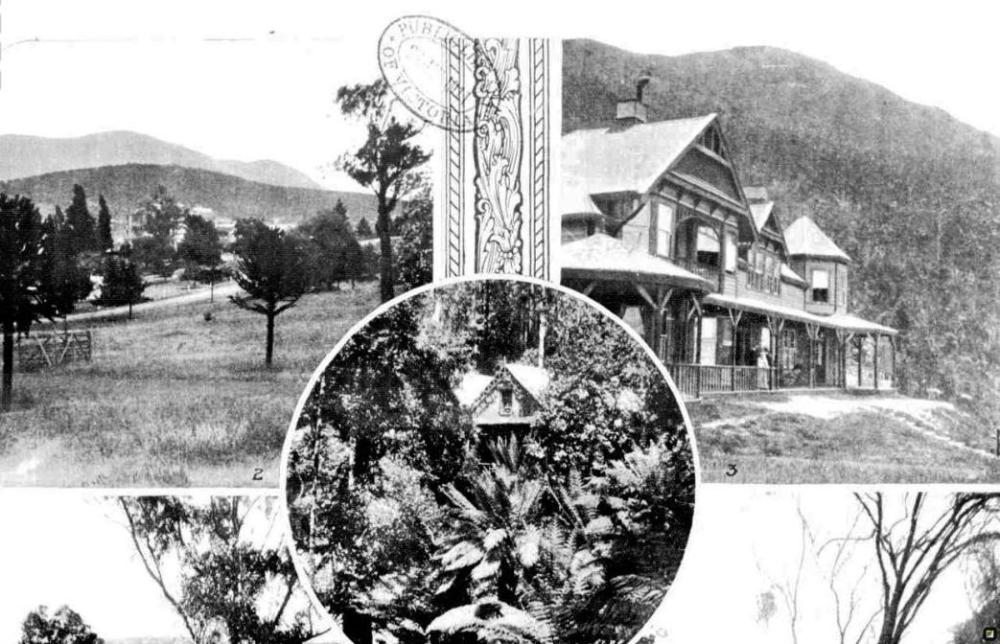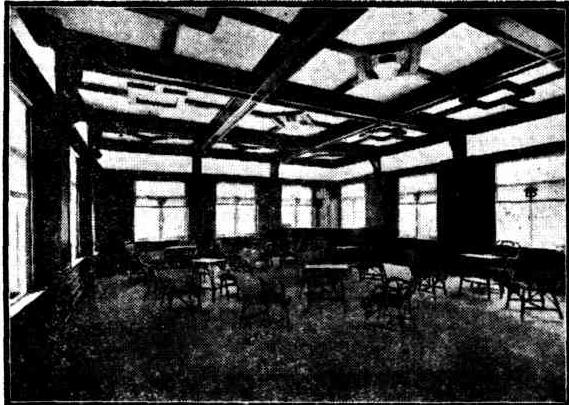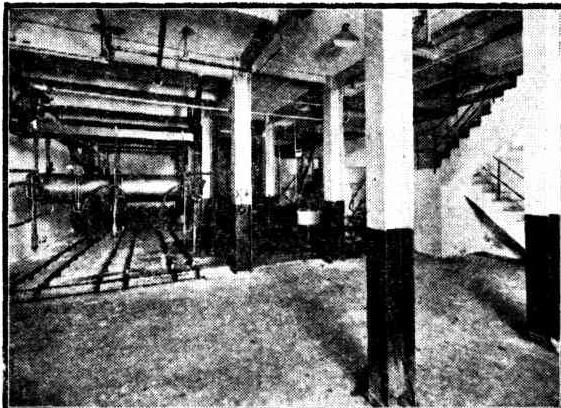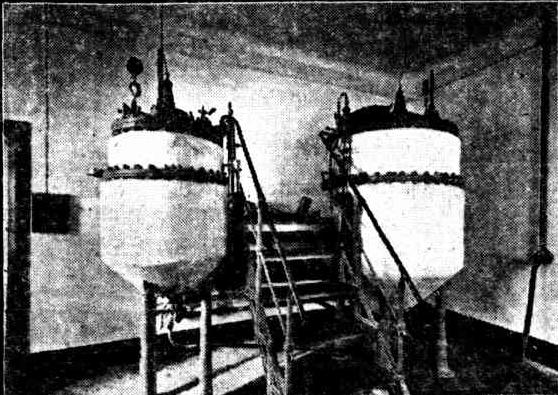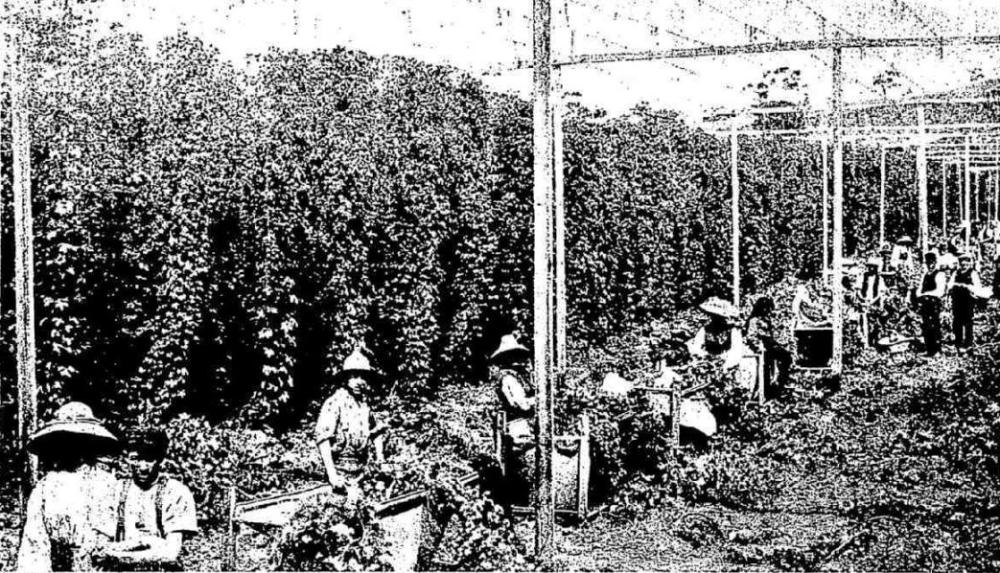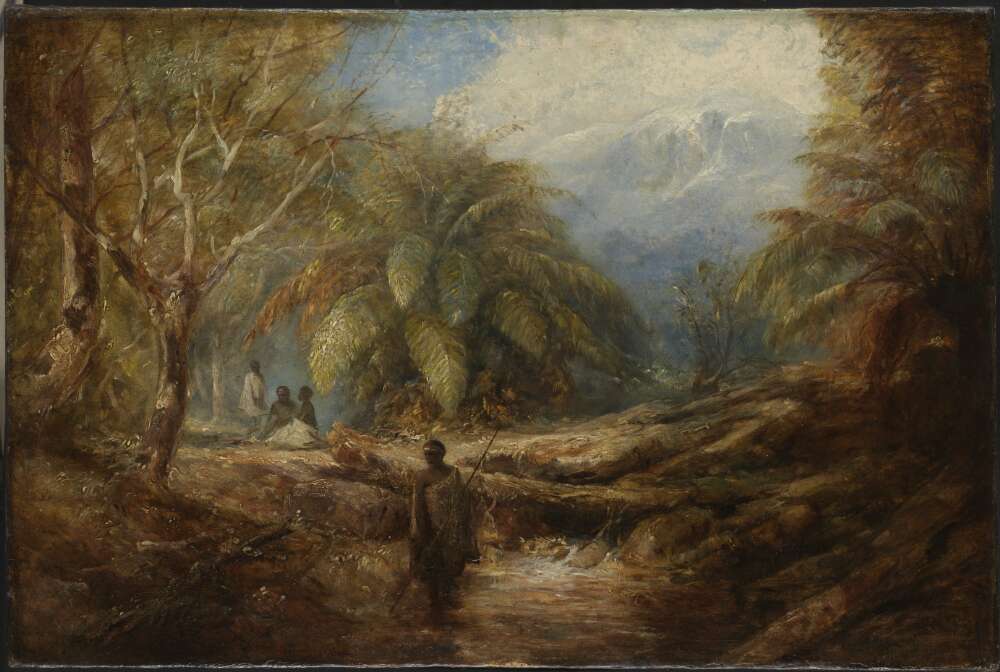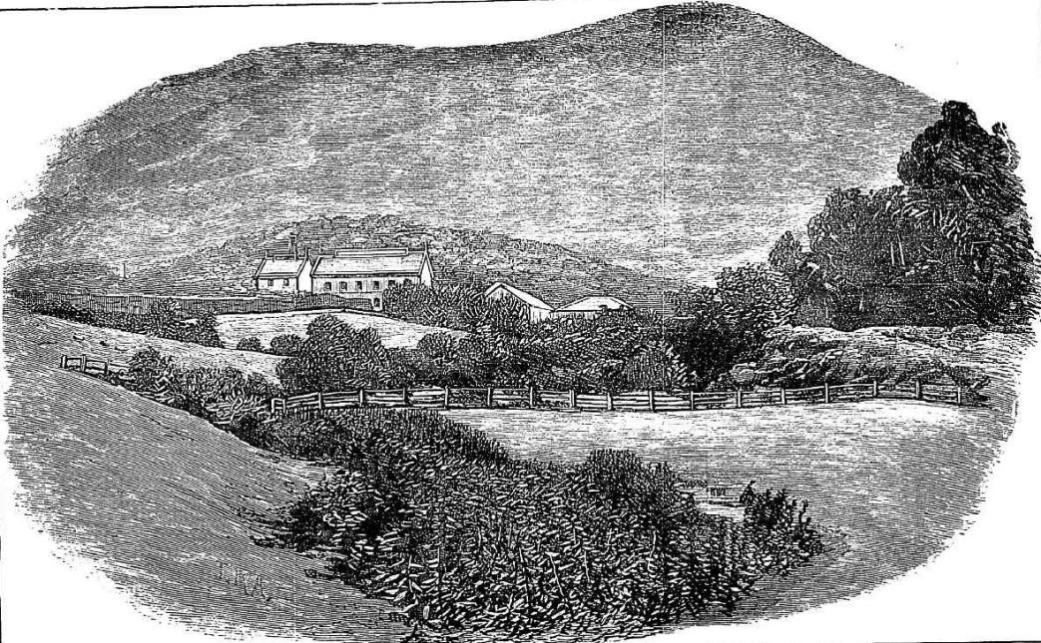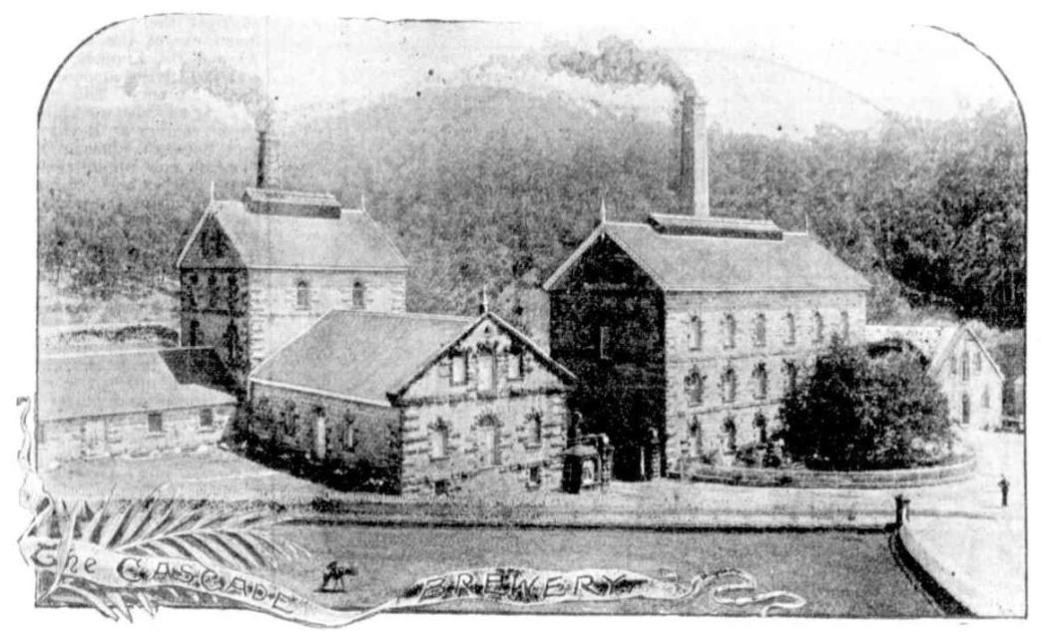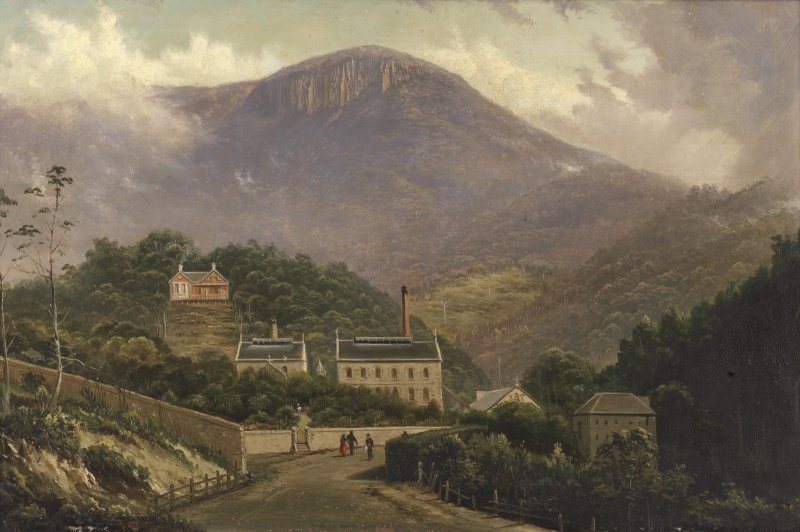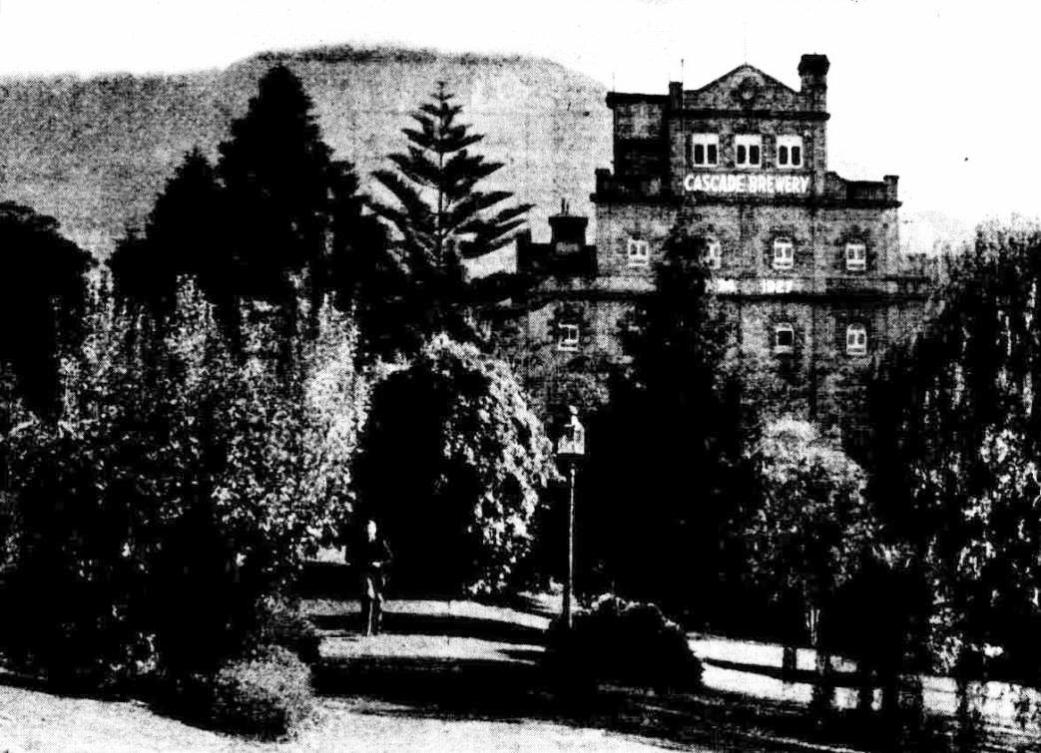For many years after the first Australian colony, New South Wales, was founded in 1788, it did not have its own currency and had to rely on the coins of other countries. During the early days of the colony, commodities such as wheat were sometimes used as a currency because of the shortage of coins.
Spanish dollars were sometimes cut into "pieces of eight", quarters, and then into 2/3 and 1/3 segments, with the 2/3 segments (1/6 of original coin) being "shillings" and the 1/3 segments (1/12 of original coin) "sixpences". In 1791 Governor Phillip of New South Wales fixed the value of the Spanish dollar to equal five shillings.
Under the decree of 19 November 1800 by the governor Philip Gidley King, the following coins were legal tender for the exchange value of:
Gold Mohur = £1/17/6 (one pound, 17 shillings and sixpence).
Spanish dollar = 5 shillings.
Ducat = 9/6 (9 shillings 6 pence).
Rupee = 2/6 (2 shillings and 6 pence).
Pagoda = 8/- (8 shillings). .
Dutch Guilder = 2/- (2 shillings).
English shilling = 1/1 (1 shilling and 1 penny).
Copper coin of 1 oz = 2 pence.
The settlers did have some George III one-penny coins, which were referred to as "Cartwheel pennies". These were the first British coins to be officially exported to the Australian colonies, and so can be considered Australia's first official coins. They were dated 1797 and 1799, with Britannia on one side and King George III on the other.
In 1812, Governor Lachlan Macquarie of New South Wales bought Spanish dollar coins, following the arrival of the ship Samarang at Port Jackson with 40,000 Spanish dollars, paying four shillings and nine pence for each dollar. He was worried that the coins would quickly be exported out of the colony and had holes cut in the middle of them to try to keep them in Australia. These were known as Holey dollars (valued at five shillings), with the piece from the middle being called the Dump (valued at around 15 pence). Both were declared legal currency on 30 September 1813 and went into circulation in 1814.
British currency became the official currency of the Australian colonies after 1825, with almost £100,000-worth of British coins being imported during 1824–25. The Holey dollar was no longer legal tender after 1829.
Australia 1857 Sovereign (proof)Australia (coin), courtesy the National Numismatic Collection (image) - National Museum of American History
Unofficial gold coins were used during the gold rush of the 1850s. Traders' tokens were also used because of the shortage of coins caused by the large increase in population. Requests to make gold coins in Adelaide in 1852 to compensate for the shortage of coins were rejected by Britain after 25,000 One Pound pieces were struck.
Australia's first official mint was in Sydney, founded in 1855. The British Secretary of State gave acceptance to the colonial government to establish a mint in Sydney which was to be the first branch of the Royal Mint outside England. The rear side of the mint became the coining factory. This was housed in the Rum Hospital, so called because the contractors were paid in rum, 45, 000 gallons of it, as this was one 'currency' then.
The Sydney Mint produced gold coins with an original design between 1855 and 1870, with "Sydney Mint, Australia, One Sovereign" on one side and Queen Victoria on the other, or "Sydney Mint, Australia, Half Sovereign", before starting in 1870 to mint gold coins of British design. One gold sovereign equaled £1. Coins of Australia. (2016, September 4). In Wikipedia, The Free Encyclopedia. Retrieved from https://en.wikipedia.org/w/index.php?title=Coins_of_Australia&oldid=737651858
A PAGE FROM THE PAST. The Cascade Estate For 100 Years.
A Moving Story. Hardships of the Early Pioneers. The Degraves Centenary.
BY CECIL ALLPORT
(Special to The Mercury )
Amongst the captains of enterprise and industry, who in the early twenties of the nineteenth century, left their English homes to seek fortune, wealth, and comfort in these southern lands, the name of Peter Degraves should for ever occupy a prominent place. Born in 1778 but two years after the celebrated declaration by the American colonists that they were free and independent of the Crown of England the late Mr. Peter Degraves passed his boy hood and early youth in the town of Dover, where his father carried on a lucrative practice as a physician and surgeon. In those far-off days the inhabitants of Dover were generally the first to receive news of the stirring events taking place in Europe, and Peter Degraves from earliest youth would hear of the wars, and rumours of wars, of the battles by sea and land in which his country was almost continuously involved. Ere he reached the age of 15 Maximilian Robespierre had inaugurated the Reign of Terror, and the horrors of the French Revolution had burst upon an astonished world. But a few years more and Napoleon Bonaparte had been proclaimed Emperor of France, and established a despotism over Europe, destined to last until his final overthrow on the field of Waterloo. It is not to be wondered at that men, who in youth and early manhood had lived in close proximity to such happenings, and witnessed the devastation wrought by internecine strife, should resolve to leave the land of their forefathers and seek, with their wives and families, their future fortune in the Greater Britain beyond the seas.
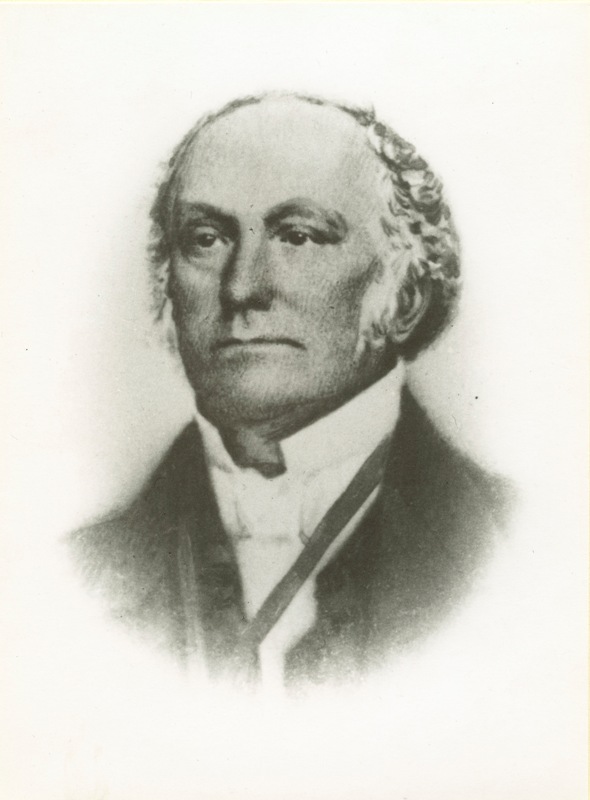 However this may be, we know from what history tells us of the achievements of Peter Degraves in Van Diemen's Land that he was possessed of all the qualifications essential to in sure success in the land of his birth. He had served an apprenticeship with the celebrated engineer, Mr.. John Rennie, who, amongst other, monuments of his ability, constructed the Plymouth breakwater and the Southwark and Waterloo bridges over the Thames. In addition to his engineering attainments, Mr.. Degraves was an architect of no mean order, and an able draughtsman. He had, moreover, a knowledge of surveying or land measurement, as it was then generally called, and was an experienced mathematician well versed in the science of Algebra, and especially skilled in making calculations and estimating quantities and values of extensive works.
However this may be, we know from what history tells us of the achievements of Peter Degraves in Van Diemen's Land that he was possessed of all the qualifications essential to in sure success in the land of his birth. He had served an apprenticeship with the celebrated engineer, Mr.. John Rennie, who, amongst other, monuments of his ability, constructed the Plymouth breakwater and the Southwark and Waterloo bridges over the Thames. In addition to his engineering attainments, Mr.. Degraves was an architect of no mean order, and an able draughtsman. He had, moreover, a knowledge of surveying or land measurement, as it was then generally called, and was an experienced mathematician well versed in the science of Algebra, and especially skilled in making calculations and estimating quantities and values of extensive works.
Right: Peter Degraves - same photo as in article - clearer from and courtesy Tasmanian Archives and Heritage Office
Before leaving England he was regarded as an authority on boring for water, and had successfully carried out schemes of this nature for the Duchess of Buccleuch and for the Marquis of Stafford. Yet, notwithstanding his successes and prospects of advancement in England, Mr.. Degraves in 1820 resolved to emigrate. His brother-in-law, Major Hugh Mcintosh, decided to accompany him, and it was arranged that they should enter into partnership as sawmillers, and take out to Van Diemen's Land an extensive plant with the most up-to-date machinery then obtainable. There was much to be done before they could embark. A ship, called the Hope, was obtained, but whether this had previously been the name of the vessel, or whether it was conferred upon her as expressive of the wish of Messrs. Mcintosh and Degraves for the success of their enterprise cannot now be ascertained. The sawmilling machinery and plant was selected and put on board, and when all preparations were finally completed Mr. Degraves, with his wife and children and Major Mcintosh, with a large number of other passengers, left England.
RETURN TO PORT.
Before embarking Messrs. Mcintosh and Degraves, following the usual practice, had obtained from Lord Bathurst, His Majesty's Principal Secretary of State for the Colonial Department, letters to the Governor of Van Diemen's Land recommending them as desirable settlers, these letters bearing date the 21st June and 12th July, 1821.
Hardly had the Hope left England when tempestuous weather was encountered and damage sustained which necessitated a return to port to effect repairs, and the vessel reached Ramsgate on November 18, 1821. Complaints were at once made that the ship was unseaworthy and overcrowded, and application was made to the authorities to send a number of the passengers to Van Diemen's Land by another vessel. An inquiry held as to the condition of the Hope and also as to the overcrowding, proved that the ship was thoroughly seaworthy, but the complaint as to the overcrowding was at first upheld. A further and fuller inquiry was then demanded, and allowed, and the former decision as to overcrowding was ultimately reversed.
Messrs. Mcintosh and Degraves at this time became involved in some litigation and this, together with the time occupied over the inquiry into the condition of the Hope and other matters, occasioned so much vexatious delay that the vessel did not finally sail for Hobart until September 19, 1823. She then carried 43 passengers and was again freighted with the valuable sawmilling machinery and plant with which Messrs. Mcintosh and Degraves intended to establish themselves in business on their arrival in Van Diemen Land.
Amongst the list of passengers on this second occasion are seen names afterwards well and widely known throughout Tasmania, for instance, Mr. and Mrs. Marzetti and Mr. J. E. Mace.
The ship called in at the Cape of Good Hope, left there on, February 18, 1824, and finally reached Hobart on Saturday, April 10 following. That some adverse criticism levelled at Messrs. Mcintosh and Degraves in consequence of the former unsuccessful attempt to navigate the vessel to Australia, was not shared by the British authorities, is best shown by the fact that Lord Bathurst not only instructed the Governor of Van Diemen's Land to allot Mcintosh and Degraves an area of 2,000 acres of land for which they were to receive a grant from the Crown, but also immediately after the sailing of the Hope, wrote a further letter to Lieutenant-Governor Arthur setting out the additional assistance which His Majesty's Government desired the Colonial Government to render them on arrival at their new home. This letter was couched in the following terms:
Downing-street,
October 2, 1823.
Sir, - In consequence of various circumstances connected with the ship Hope, but to which I do not deem it necessary more particularly to advert upon this occasion, the late owners of that vessel, Mr.. Degraves and Major Mcintosh have acquired some claim to the protection of His Majesty's Government. I have, therefore, been induced so far to assist Mr.. Degraves and Major Mcintosh in their individual arrangements of emigration to Van Diemen's Land, by allowing to them the expense of conveying a sawmill which they propose to erect in the Colony and I have further to desire that you will afford Mr.. Degraves the assistance of three convict carpenters and one smith, together with rations, for the purpose of working the mill during a period of six months, provided such an arrangement can be made consistently with the exigencies of the public works.
"I have also to instruct you to grant rations for six months to Mr.. and Mr.s. Degraves and eight children, and to Major Mcintosh and one child.
"I have, etc.,
"BATHURST."
The inconvenience and loss occasioned the passengers of the Hope on her first departure from England in 1821 seems to have been partly brought about through their being informed that the vessel would sail earlier than she actually did. This was one of the com-plaints made when the vessel was driven back by storms, but it may well be doubted whether Messrs. Mcintosh and Degraves were responsible for it. Under any circumstances it seems to have been a common practice in the early days. In Syme's History of Van Diemen's Land, published in Dundee in 1848, there occurs this passage:
The emigrant should ascertain as near as he can the time of sailing, as it is usual for the broker, in order to get his vessel as forward as possible, to state the time to be much earlier than it can, or in reality does, take place, and I have known a large family expend nearly as much money in Gravesend waiting for their vessel as they had paid for their passage in the cabin. It is not customary for passengers to lay in their own provision, otherwise a considerable saving might be made in the expense of the voyage.
ARRIVAL IN TASMANIA.
Mr. Peter Degraves, on arrival in Tasmania, was 45 years of age, and therefore well advanced in life. He was accompanied by his wife and eight children - four sons and four daughters also by his brother-in-law and partner. Major Mcintosh. It is said that this latter gentleman was accompanied by one child, but the statement is not borne out by the passenger list published in the "Hobart Gazette" of 16th April, 1824, and circumstances which occurred at a later date lead to the conclusion that he was unaccompanied by any member of his family though the letter from Lord Bathurst of 23rd October, 1823, shows it had been the intention of Major Mcintosh that his child should accompany him.
Amongst the articles of utility which Messrs. Mcintosh and Degraves brought to Van Diemen's Land were a number of the silver coins now known as "Degraves shillings." These coins were minted in England to the order of Messrs. Mcintosh and Degraves and brought to Tasmania for circulation in connection with their business. They were, of course, only tokens and did not contain so large a quantity of silver as an ordinary shilling. They were, however, the first silver tokens introduced into Australia, and on this account alone are extremely interesting. The exact number placed in circulation is unknown, and it is improbable at this distance of time that it can ever be ascertained. Though they are now exceedingly rare, specimens can be seen in the British Museum, in the Museums of Melbourne and Sydney, and no doubt in some other public institutions as well as in some private collections; collections; while one is, or at all events was until recently, worn on a watchchain in Hobart. The great bulk of these coins, however, must have long since disappeared in the melting-pot.
As an interesting reminder of the Degraves shilling and of the enterprise of Mcintosh and Degraves in bringing these tokens to Van Diemen's Land a century ago, Mr.. Alfred Chitty, Fellow of the British Numismatic Society and Numismatist of the Melbourne Museum, had a centenary medal struck last year. This is about the size of the double florin and was prepared under the instructions and at the sole expense of Mr.. Chitty. The obverse embodies in the centre the design of the Kangaroo as shown in the original token with the date 1823-1923 below.
The reverse contains the following inscription:- "To commemorate the Centenary of the issue of the Mcintosh and Degraves Tasmanian shilling."
The medal is a handsome reminder of an interesting event, is greatly prized by collectors now, and will be much more so as years go on. Mr.. Chitty only had 50 of these centenary medals struck, and four of these, thanks to his kindness, are now held by Tasmanians.
The Hope landed her passengers on the Old Wharf at Hunter's Island, and discharged her cargo, and Messrs. Mc-intosh and Degraves lost no time in waiting upon the Lieutenant-Governor and presenting him with their credentials. They were at once promised every facility for selecting the location and referred to the Surveyor-General, Mr.. G. W. Evans, who was instructed to give them all necessary information as to the areas still available for location and settlement.
Having completed their inspection, Messrs. Degraves and Mcintosh on June 3, 1824, applied by letter for a location to them of certain land therein referred to as situate between Lowes Distillery and Table Mountain, and which had been pointed out to them by Mr.. Evans as "in every way suitable" for their purpose, being thickly covered with timber, and with a waterfall running through it," and on June 11 Sir George Arthur addressed a letter to the Surveyor-General in the following terms:
June 11, 1821. Government House.
Sir, - You are hereby authorised and required to locate and measure to Messrs. Degraves and Mcintosh, free settlers, under order of His Majesty's Secretary of State for the Colonial Government 2,000 acres of land of which they are to receive a grant.
GEORGE ARTHUR.
Lieutenant Governor. G.-.W. Evans, Esq.,
Surveyor-General.
The area referred to in the above location order was then a wild, primeval forest untouched by the hand of man. It was very heavily timbered and lay on the south-eastern slopes of Mount Wellington between the Hobart Rivulet and Guy Fawkes Rivulet on the northern side, and the Sandy Bay Rivulet on the Southern side, while it is bounded on the eastern side by a location held by Robert Lathrop Murray and another held by Thomas Yardley Lowes, the former of whom had arrived in Van Diemens Land in 1818, and the latter in 1822.
WRECK OF THE HOPE
Before following the fortunes of Messrs Mcintosh and Degraves let us turn for a moment to the subsequent history of the Hope. Having completed her unloading and taken in such cargo as was available at Hobart Town the vessel left for Sydney on May 18 1824 and reached there in due course she after wards left there for Mauritius and re-turned to Sydney in February 1825 with a cargo of sugar.
From this time the Hope seems to have entered the lists as a regular Australian trader until on April 22 1827 we find her leaving Sydney for Van Diemen's Land with numerous passengers and large cargo on her last eventful voyage. Passing Tasman's Island on the afternoon of Saturday April 28 1827 and proceeding up past Cape Raoul Pilot Mansfield joined the ship and took charge while the captain, worn out by forty eight hours rough weather, retired to rest. Some discussion seems to have taken place as to the pilot's ability to navigate the vessel into the river during the dark and rainy night that was then approaching and the captain advocated the more prudent course of standing outside until daybreak. The pilot however urged that his long experience in the River Derwent would enable him to take the ship up in safety without waiting till morning and the captain acceded to his request and left the vessel in his sole charge. The night continued dark and heavy rain fell and about two hours before daybreak the Hope ran ashore on the long stretch of sand which extends beyond Iron Pot Island and opposite Betsey Island. Heavy surf at once broke over the vessel and very shortly a leak was sprung. Nothing could be done till morning and as soon as it was light two whaleboats came across from Bruny Island to render assistance. Efforts were then made to get the ship off but these being unsuccessful, a number of the passengers were landed and taken to Hobart Town with news of the disaster.
Later in the day the agent of the vessel Mr.. W. A. Bethune despatched the sloop Recovery to the scene of the wreck with instruct-tions to save as much of the cargo as possible. The rest of the passengers meanwhile remained on board but during the following night the position became worse. The rudder gave way and the upper part of the stern was driven in and all on board were employed assisting at the pumps. The masts were then cut away but it was evident all hope of saving the vessel must be given up. The remainder of those on board were landed in safety and the ship virtually abandoned. The first succeeding southerly storm completed the destruction of the Hope and left her stout timbers strewn and shattered on the beach that ever since has borne her name.
Although the passengers and crew of the Hope were all saved there was one tragic circumstance connected with the wreck which evoked an outburst of sympathy from the inhabitants of Van Diemen's Land. On 9th May, 1827, the wreck was sold for the benefit of all concerned to Captain John Laughton formerly of the Apollo which vessel had a few weeks before been lost on the East Coast of Van Diemen's Land. Immediately after making his purchase Captain Laughton proceeded down the river with a view to saving all that was practicable of his property. While inspecting the wreck with Captain
Cunningham, who had been in charge of the Hope, their boat was struck by a sea and filled with water. Captain Cunningham succeeded in reaching the land but Captain Laughton unfortunately was drowned. Almost the whole of his property had been lost with the wreck of the Apollo and owing to this further affliction his widow and children were left unprovided for. Descendants of Captain John Laughton have ever since been identified with this country and a grandson Mr.. James Laughton is now the well known registrar of births, deaths, etc., for Tasmania.
THE CASCADES.
The country lying at the foot of Mount Wellington or Table Mountain, of which McIntosh and Degraves were authorized to take possession was then known as the Cascade. It is uncertain when this name was first given to the locality or the reason which induced it or the per son by whom it was conferred. There appears to be only one reference to the name in the early press prior to the arrival of Mcintosh and Degraves. This is in the Hobart "Town Gazette" of January 17, 1818:-
The bridge at Cascade was burnt down on Tuesday owing to the grass and shrubs in that neighbourhood being set on fire; which, we understand, is supposed to have been maliciously done by some persons at present un-known, but who, we hope, will yet be discovered.
It has been supposed that the name was given to the district by settlers who arrived here from Norfolk Island from 1806 to 1808, but the only reason for this is that a settlement there had been known as Cascade, almost from the first colonisation of Norfolk Island. The idea has not, therefore, much to com-mend it, and a far more likely explanation of the term is that in the early days of last century the Hobart Town Rivulet was a much larger and more important stream than it is to-day.
In a work on Van Diemen's Land by Lieutenant Charles Jeffreys, R.N, the original owner of Frogmore, Sorell, which was published in London in 1820 and was indeed the first book about this country written by a settler, there occurs the following paragraph with reference to Hobart Town and the Rivulet:-
The town is pleasantly situated in a gently sloping plain, at the foot of Table Mountain. It is near one mile in length from north to south, and about half a mile in breadth, containing three hundred houses, occupied by a population of from eleven hundred to twelve hundred persons. A beautiful stream of fresh water runs through the centre, with a cur-rent sufficiently strong to turn any number of mills, several being already erected; and such is the abundant flow, that were the population twenty times its present magnitude, the in-habitants would find from this rivulet, an ample supply for all the pur-poses of comfort and convenience.
It is evident from this passage, and the statement is borne out by later writers, that the flow of water in the Town Rivulet more than a hundred years ago was much greater than that, now meandering down the channel of the creek.
At that time the south eastern slope of the mountain was an almost impenetrable forest, the densest growth being naturally on both sides of the bed of the rivulet which was completely overarch-ed by fern trees scrub and lofty trees. As the forest and undergrowth have been thinned out and removed the springs have diminished in volume or al-together disappeared, and the flow of water has proportionately ceased. The stream, moreover, was, in the early days, greatly obstructed by large trees which had fallen across it, and debris having silted up, this would naturally tend to produce a series of slight falls or cascades which, in all probability, gave rise to the name by which the locality has ever since been known. This view is supported by the statement as to a waterfall in the letter of June 3, 1824, above referred to, and is also borne out by the memorandum of January 19, 1833, referred to below.
Photograph from a sketch drawn by J. Skinner Prout, in 1844, showing portion of the Cascade estate.
It is said that Mr. and Mrs. Degraves, with their family and Major Mcintosh, on their arrival in Tasmania stayed with the late Mr. John Walker, who had reached here three years earlier, and was then in charge of the Government mill in Barrack and Collins streets. In June, 1824, however, they took possession of their location, and on the 26th of that month the Colonial Secretary in-formed the firm that on the Monday fol-lowing an overseer with a gang of 20 men would be ready to assist them in any necessary work. This gang was at once employed in clearing the sites for the sawmill and for a dwelling, digging out the foundations and forming a mill race. The water of the tributary stream, known as Guy Fawkes Rivulet, was led into the town rivulet shortly above the site marked out for the mill, and a dam constructed, from which the combined water of both rivulets flowed to the wheel by which the sawmill was to be worked.
ERECTION OF THE MILL.
DISPUTE ARISES.
In 1825 the mill was in active operation, the "Gazette" published on August 13 of that year containing the following paragraph:—"We are happy to ob-serve that the sawmill erected near the cascade on the town rivulet by Messrs. Mcintosh and Degraves is now in full and active operation. It is one of the most complete machines of the kind in any country, and timber is cut by it with astonishing nicety and rapidity. The public are called upon to patronise such patriotic and beneficial undertakings."
The work was hardly completed, how-ever, when trouble arose. The original locatee of the land on the south-eastern side of the location to Messrs. Degraves and Mcintosh was Mr.. Charles Robertson, who had transferred his rights to Mr.. Robert Lathrop Murray. Mr.. G. W. Evans, the Surveyor-General, had pointed out to Mcintosh and Degraves the line of boundary between their land and Robertson's, thus indicating where their buildings might be erected. It afterwards turned out, however, that erroneous information had been supplied, and that the mill had, as a fact, been erected on the land located to Robert-son, and, further, that the right to this location had been transferred, to Murray. Messrs. Mcintosh and Degraves thereupon presented a memorial praying that the grant to Robertson's land should be withheld, and Governor Arthur, on this being referred, to him, wrote to Colonial Secretary Goulburn as follows:-
"Government House,
Hobart Town,
September 15, 1825.
"Sir,-I have the honour to acknowledge the receipt of your letter of the 12th of March last referring to my consideration by direction of the Governor a memorial from Major Mcintosh and Mr.. Degraves, praying that a grant of 500 acres of land at the Cascade, near Hobart Town, may be withholden from its grantee, Mr.. Charles Robertson, for the reason assigned.
"I had already brought this case, which is a most glaring land job, under His Excellency's consideration. As long since as the 7th of August, 1824, I entered fully into the shameful barter of land, which had taken place in this colony, and took, the liberty of suggest-ing to the Governor that a strict inquiry here should precede the delivery of every grant, so that it might be with-held and reported upon in all these cases wherein it might be manifest that the parties had already violated the conditions of the grant.
"I have, etc.,
"GEO. ARTHUR."
Although the sawmill continued working without any apparent interference by Mr. Murray, the error in the boundaries was not rectified, and on January 19, 1827, we find the matter referred to by Mr.. Acting Surveyor General Dumaresq in a lengthy report addressed by him to Colonial Secretary Burnett. The sixteenth paragraph of this report states:
"A reference to the very voluminous correspondence on the subject of Messrs. McIntosh and Degraves land, and the erection of the valuable saw mill and other machinery on land, granted to C. Robertson and by him made over to R L Murray, will show the great importance of another error I am about to describe.
"It appears that Mr. Evans pointed out to Messrs. Mclntosh and Degraves the ground on which they might erect their mill etc, informing them that it was beyond the land included in the grant to C. Robertson (that is R. L. Murray); nevertheless when the mill was completed it appears by the plans which are in the office and by one drawn by Mr. Scott (for the express purpose of elucidating, and accompanying the correspondence, amongst the papers of which I found it), that the sawmill is included in Murray's land. On very minutely examining Mr. Scott's plan, I discovered some errors, which are by no means apparent at first view, but which have consequences of the utmost importance to the interests of those concerned. In the first place, one line is a little prolonged (as appears by the plan), and then a different bearing of a few degrees from the proper one ac-cording to the grant, is given to the next By these means, the valuable sawmill, etc, of Messrs Mcintosh and Degraves is included in Murray's land. But the most remarkable circumstance, and to me convincing proof of intentional error, is that there is a slight pencil mark just on the line of proper bearing by the grant, but which was so faint that I did not discover it until I had applied my protractor for the purpose of drawing it. It is also remarkable and unusual that the lines, purporting to include 500 acres, only contain 385 acres, while the next adjoining grants, as usual, include more than the quantity mentioned. . . ."
Many years elapsed before this error was rectified, but ultimately a new south-western boundary of Robertson's location was marked out and the land between this and the former south-western boundary on which the sawmill and other buildings had been erected passed by private arrangement from Mr.. R. L. Murray to Mr.. Peter Degraves. Throughout his life Degraves blamed Evans for this matter, and on more than one occasion used his facile and often caustic pen to refer to Evans in terms of the most unqualified vituperation and invective.
WATER SCHEME FOR TOWN.
It was impossible for a man with the mental activity of Peter Degraves to be idle, and in the month of December, 1824, while the work of erecting the sawmill was being vigorously pushed forward we find him preparing plans to secure a better water supply for Hobart Town.
In the Gazette of December 17, 1824, occurs the following passage:-
Mr.. Degraves, whose ingenuity is well known by all who have the pleas ure of his acquaintance, has submitted a proposal for laying down water pipes throughout this town, provided the Government will grant him a prescriptive charter, so as to secure a fair remuneration for the necessary outlay of time and capital. We think the proposal is extremely handsome, and as to the favourable public results of legislatorial compliance with it there cannot possibly exist a doubt.
Nowithstanding the offer of Mr. Degraves and the favourable comment set out in the "Gazette" nothing appears to have been done, the town continuing to obtain its supply of water in the same way as previously.
IMPRISONMENT FOR DEBT
In April, 1826, but little more than six months after the sawmill had been cutting, Degraves was called upon to face the greatest trouble that beset his long and eventful life. Prior to leaving Eng-land he and his partner, Major McIn-tosh, had become involved in a dispute which culminated in legal proceedings being instituted against them. It is impossible at this distance of time to ascertain the merits of the claim, but judgment appears to have been obtained by the plaintiffs, though Degraves always asserted that justice had not been done However this be, no objection seems to have been raised to Degraves and his partner emigrating to Van Diemen's Land, and apparently they came to the conclusion that with then departure from the homeland the matter was at an end. Early in 1826, however, the proceedings initiated in England were continued here, and these culminated in the issue of execution against Mcintosh and Degraves, and the publication of an advertisement by the Sheriff on the 6th of April, 1826, in the following terms.
"Sheriff's Office,
"April 6th, 1826 "In the Supreme Court
"Bishop and Another v. McIntosh and Degraves.
"To be sold by auction, by direction of the Sheriff, on the premises at the Cascade, on Monday, the 17th instant, at 12 o'clock, that capital sawmill with all its machinery, etc, complete, and a quantity of sawn timber and a small house, also seven working bullocks, a cart, etc, together with a small quantity of household furniture. At Mr. W A. Bethune's, on the wharf, at 3 o'clock on the same day, a pair of excellent millstones and a small box containing bolting and bristles and wire, the property of the above defendants, unless this execution be previously satisfied."
The defendants met this challenge by filing their declaration in insolvency, and the plaintiffs thereupon retaliated by causing Mr. Peter Degraves to be arrested for debt, and confined in the Debtors' Prison. In those far-off days imprisonment for debt was allowed by the law of England, and also by the laws of New South Wales and Van Diemen's Land, but relief from actual imprisonment appears to have been obtainable according to English law when once the defendant had been declared insolvent. This rule was followed in New South Wales by the three judges who then presided on the bench of that colony, but for some reason Chief Justice Pedder, the first Chief Justice of Van Diemen's Land, took a contrary view, and Mr. Degraves was thus deprived of liberty by his inexorable creditors, and remained under arrest for several years.
During this time many efforts were made to secure a modification of the law or of Mr. Justice Pedder's interpretation of it, and Mr. Degraves himself addressed to the authorities numerous letters on the subject couched in the trenchant language which he knew so well how best to employ. One lengthy epistle addressed to His Excellency Sir George Arthur on this subject by Mr. Degraves concludes as follows:—
I wish to impress on the mind of Your Excellency that, with a family of eight children, I have now endured eleven months' imprisonment at the suit of these plaintiffs to whom I am not indebted one single shilling, and impatience under punishment so severe and unmerited is but natural, feeling as I do, that I am here chained up like a dog, unheeded and forgotten.
In these more enlightened days all will agree with Mr. Degraves, but unfortunately it was impossible nearly a hundred years ago to obtain any modification of the hardships to which he was condemned. At last relief came, and in July, 1831, Mr. Peter Degraves was once more at liberty, and able to go forward on the path of progress and prosperity which from that time onward he followed until the close of life. Throughout his long period of confinement he had displayed great fortitude and endurance and patience under adversity such as few are called upon to face.
From 1826 the sawmill had continued at work, the absence of Mr. Degraves having occasioned no interruption of the business, which was presumably being carried on in the interests of the creditors. Even while under arrest for debt Degraves kept himself busy, and, face to face with the evils and inconveniences resulting from a small and over-crowded house of correction, he endeavoured to assist the Government of the day by preparing elaborate plans for a new and more commodious gaol, the authorities then having under consideration the construction of a new prison on another site.
IMPENETRABLE FOREST.
After his release, Degraves again took up his residence at the Cascade, and the work of the mill proceeded as before. During 1831, however, a change came. In that year, with a view to increasing the flow of the water in the Hobart Town Rivulet, Governor Arthur had a channel cut on the slope of Mt. Welling-ton, above the level of the Springs, for the purpose of diverting into the town creek part of the water which would otherwise have flowed into Brown's River, and about the same time a tunnel was completed by which water was taken from the rivulet for the use of the town. This tunnel was supplied by means of a dam raised across the rivulet about 200 yards above the old dam of Messrs. Mcintosh and Degraves, which had been constructed in 1824 and 1825. By this tunnel water was then conducted from above Mcintosh and Degraves's intake through their land to a point a little below the upper end of what is now known as the Cascade-road, and thence to the town. This state of things seems to have continued till to-wards the end of 1834, or the beginning of 1835, Mcintosh and Degraves apparently making no complaint, because the extra water turned into the rivulet, as mentioned above, gave such an additional flow as left them, in much the same position as before.
In 1833 Messrs. Mcintosh and Degraves applied to the Government for the issue of their grant to the 2,000 acres which had already been so long delayed. The Government, in reply, pointed out the difficulty in getting the boundaries laid down owing to the impenetrable nature of the forest, but gave the applicants a more extended location order with the following memorandum, which is dated the 19th January, 1833:—
"As some time must elapse before the boundaries of this forest land can be completely laid down, and as it is essential to the grantees that in the interim they should be secured in the possession of some definite limits, they are hereby authorised to hold possession, pending the survey of the land, of all that tract of ground which is bounded on the north-east, north-west, and on the south-east in the manner described in the annexed location order, and on the west by a northerly line touching a point in the upper Mill-road, which is two miles and ten chains in a direct line from the north-east boundary near this mill, and touching another point near the King's pits (beyond them), which is one mile and three-quarters, distant from the mill in a direct line.
"But it is to be clearly understood that this authority will only hold effect as long as the location remains un measured and that a more particular description of the grant will supersede this, upon the actual measurement being completed."
The King's pits referred to in the above memorandum were situated on the slope of Mount Wellington, and the site may still be seen. James Backhouse in his narrative of a visit to the Australian Colonies says: "On April 15, 1832, we held a meeting with some sawyers in their huts at a place called the King's Pits, on the ascent of Mount Wellington, at an elevation of about 2,000ft, and about four miles from the town. The forest among which they are residing is very lofty, many of the trees are clear of branches for upwards of a hundred feet. It caught fire a few months ago and some of the men narrowly escaped. The trees are blackened to the top, but are beginning to shoot again from their charred stems. The brush-wood is very thick in some of these forests . . . The brook that supplies Hobart with water flows from Mount Wellington through a valley at the foot of the mountain. Here the bed of the creek is rocky and so nearly flat as scarcely to deserve the name of the Cascades, by which this place is called"
These pits were located at the very source of the Guy Fawkes Rivulet, and not far below the New Town side of the face of the organ pipes. The locality used to be known as "Brown's Flat."
MOUNTAIN LAKE
In 1834 Major Mcintosh died leaving all his interest in the property to his brother-in-law.**The summer of 1835 proved exceedingly dry, but little rain fell, and the water in the Rivulet suffered serious diminution. In addition the tunnel was at this time in much need of repair, and a large quantity of water was lost owing to leaks and soak age. The town supply thus became deficient, and the inhabitants raised serious complaints, these culminating in constables being employed to break down Mr. Degraves's dam. As this was some two hundred yards below the dam which supplied the tunnel its destruction was obviously useless, and while adding nothing to the supply of water in the tunnel merely had the effect of leaving the water wheel of the mill dry, in consequence of which shortly after wards the wheel fell to pieces. For this Degraves brought an action and recovered damages which were paid by the Government. Mr. Degraves then entered into a more ambitious project by tapping the Rivulet some three quarters of a mile higher up the stream and con ducting the water in a race or water course along the side of the hill to what was afterwards known as the Moun-tain Lake. From this point the water was run by means of pipes, supplied by the Lieutenant Governor, who re garded the work as beneficial to the community, to the site of an hydraulic mill which Mr. Degraves was then erecting for grinding corn. From this point the water flowed into a large pond or reservoir constructed for its reception, and from this reservoir it could be transported to a new mill wheel 40ft in diameter, which was erected in place of the wheel destroyed, and from there it passed into the town tunnel. This work, of course necessitated some alteration in the old tunnel, which thenceforth received the water at a lower point and that part of the tunnel which was above the new intake then be-came useless, and was never afterwards resorted to. During the year 1835 the Government proposed to make a reserve along the banks of the rivulet within the land which had ever since 1824 been occupied by Peter Degraves. To this he naturally took great exception, and at once addressed a strong protest on the subject to the Surveyor-General, pointing out that portions of his buildings were erected on the land which it was now proposed to exclude from his location. The stand taken up by Mr.. Degraves on this occasion, caused the Government to reconsider the matter, and the proposal to attempt creating a reservation of land along the rivulet was then abandoned.
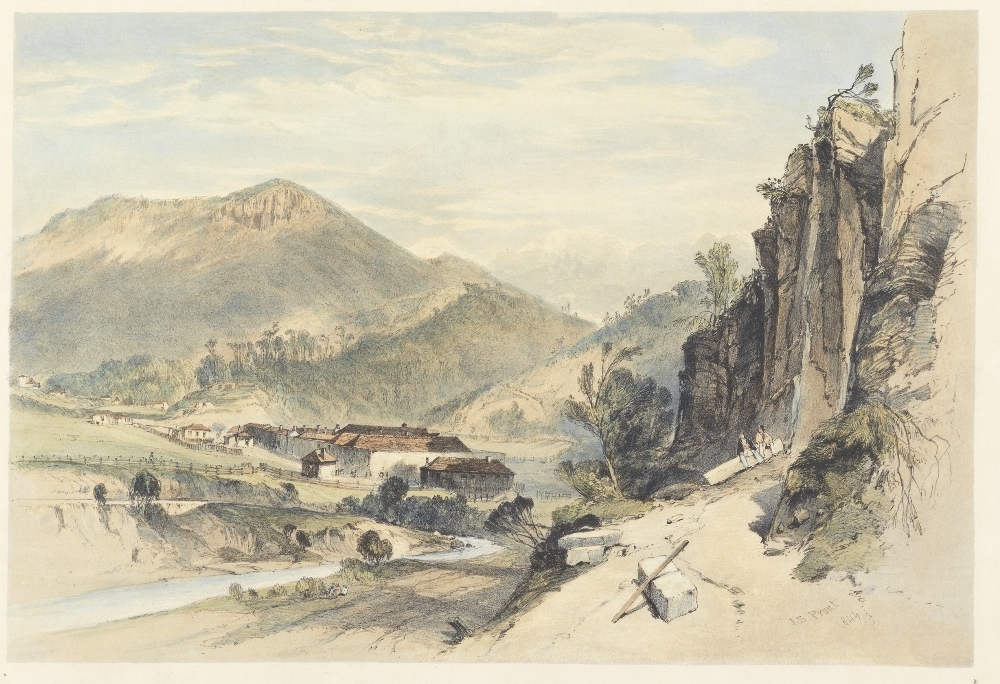
Photograph taken in April, 1924, from the same site as was occupied by the painter of No. 1 Is Actually The female factory from Proctor's Quarry J.S. Prout. Author/Creator: Prout, John Skinner, 1805-1876. Publication Information: [Hobart] V.D.L. : T. Bluett, 1844. Print, courtesy Tasmanian Archives and Heritage Office
Early in the year 1832 Mr.. Peter Degraves commenced the erection of a brewery, and during that year the necessary building was constructed and all machinery installed. At the beginning of 1833, in fact probably a little earlier, the brewery was at work, and regular supplies of Cascade beer, ale, and porter were available to customers.
In Ross's Almanac for 1833, published on 31st December, 1832, we find the following advertisement:-
"CASCADE BREWERY AND MALT HOUSE.
"At this establishment publicans and private families can be supplied at all times with genuine beer from malt and hops, either in cask or bottle, and of very superior quality. The local advantages possessed both as respects water and other conveniences enable the proprietors to perform the whole operation of the business in a manner that cannot be excelled in this colony, and by which means they supply a beverage upon moderate terms fully equal to the best London manufacture.
"Orders left at Mr. Pinker's, Elizabeth street, directed for Mr. Degraves, will receive immediate attention.
"The growers of English barley of good quality are invited to make tenders of their produce, and for which the highest price will be always given.
"N.B.-Bakers regularly supplied with the best yeast."
CASCADE SAWMILL.
"Orders for this establishment to be directed to Mr. Degraves and to be left at Mr. Pinker's, Elizabeth-street.
"Firewood regularly supplied upon moderate terms, if by the year and for ready money at the same price as the contract with Government."
WATER ACT.
In 1835 what was known as the Water Act 5, William IV., No. 14, was passed, this purporting to vest the rivulet and the soil and bed thereof and the water flowing therein, subject to all private rights and interests, in the Crown for the use of the public, and in the following year Peter Degraves succeeded in obtaining the grant for his 2,000 acres, this having been held back for years because of the difficulty in get-ting the survey of the land completed. About the year 1836, moreover, Mr.. De-graves purchased from the Crown an additional and adjoining area of 2,700 acres, the Cascade estate then comprising 4,700 acres. Some small areas were added to this from time to time, and there was also included the land subsequently obtained from R. L. Mur-ray, and on which the original sawmill had been inadvertently erected. The area of the estate thus totalled about 5,000 acres, and extended from the Cascade buildings across the summit of Mount Wellington, on the New Town side beyond the Organ Pipes, and thence to the source of the North-West Bay River.
During the succeeding years some correspondence took place between De-graves and the Government as to the quantities of water flowing down the tunnel after the mills had been served, and in 1844 an arrangement was made with the Government whereby Degraves contracted to construct a reservoir some 500 yards below his boundary on the lower side of the Cascade-road. The object of this work was to conduct into this reservoir the whole of the water after it left Degraves's mills, and from the reservoir it was then conducted by iron pipes to the town. This arrangement continued until the year 1860, when it was proposed by Parliament to pass a new Water Act, which Messrs C and J Degraves, who had then succeeded to the Cascade state, and then legal advisers regarded as a derogation of their rights. In consequence of this, Messrs C and J De-graves were heard by counsel at the Bar of the House of Assembly, and pro visions were subsequently inserted in the bill providing for payment of compensation in the event of any interference with the industries established by their late father, or by them becoming necessary in the public interest.
Shortly after this the Hobart reservoir on the Sandy Bay Creek was constructed, and the water supply for the city of Hobart has since been obtained from other streams to the south and west further round the mountain, and especially from the North-West Bay River and its tributary waters.
Only once in the long intervening period which has since elapsed have the rights of the successors of Peter Degraves to use the waters of the Hobart Rivulet been called in question. This was in 1903, when legal proceedings were instituted, and after being carried to a point of thorough investigation were abandoned, and the successors of Peter Degraves have since remained in undisturbed possession of their ancestral rights.
THE THEATRE ROYAL
In addition to his other activities, Mr. Peter Degraves in 1834 took a prominent port in promoting the erection of the Theatre Royal, in Campbell-street He was, indeed, the architect for the edifice, while his eldest son, Mr. Henry Degraves, was engaged as the builder. The foundation stone was laid on November 4, 1834, and the theatre was officially opened on March 6, 1837. This property originally belonged to a number of shareholders, but before long the whole of the interests passed into the hands of Mr.. Degraves, and he then remained sole proprietor of the theatre until the time of his death. It was formerly known as the "Victoria Theatre," and is referred to by this name in his will, being described as situated at the angle of Campbell-street and Sackville-street. This theatre has survived the flight of time better than any of the old playhouses of the neighbouring States, and is now undoubtedly the oldest theatre in Australia, if not in the southern hemisphere. There is still in existence a small sepia sketch drawn in 1837 which shows it as when first opened for the entertainment of the public.
SHIPBUILDING.
As far back as 1836, moreover, Mr. Degraves turned his attention to shipbuilding, and in that year applied to the Government for land near the Mulgrave Battery for the purpose of a slip. Not succeeding in obtaining this, he afterwards rented land between Secheron and the end of the Castray Esplanade, and there built an extensive shipyard. This was opened about 1841, and many vessels were built there under his auspices and at his expense. Amongst these may be mentioned, the Lady Emma, Miranda, Circassian, Tasman, Fair Tasmanian, Jenny Lind, Yarra, and Melbourne. Many of these vessels did a lucrative trade and carried large freights for their owner in the great days of the Victorian gold fields that were then so near at hand. The last of them was launched in 1851, but the stirring and eventful life of Peter Degraves was then hastening to its close.
NO TIME FOR POLITICS.
Throughout he had taken no prominent part in the great political questions of the day which from time to time agitated the public mind. Peter Degraves had no time for this, for his busy life in Van Dieman's Land had been fully occupied in attending to the large businesses which he had inaugurated and conducted, and in quietly and unostentatiously assisting in benefiting his fel low men. Many of the early works on Tasmania speak of him in the highest terms. Mr. George Thomas Lloyd, a nephew of Lieutenant Charles Jeffreys, referred to above, and who, in 1820, came to Van Dieman's Land at the request of his uncle to manage the estate of Frogmore in his work, "Thirty-three years in Tasmania and Victoria," which it may be mentioned was dedicated to Mr. William Degraves, a son of Mr. Peter Degraves, says;-
"Mount Wellington forms a noble background to the capital of Tasmania. At the base of its wild inhospitable region a scientific and far-seeing colonist, Mr. Peter Degraves, selected his maxi mum grant - 2,000 acres of land, timber, and rock - in direct opposition to the wise saws and suggestions of older colonists. Time, however, has proved what science, coupled with indomitable energy can accomplish.
"Mr. Degraves confidently established himself in that mountain wilderness, and from amidst its hosts of scrub he may be said to have literally carved out one of the prettiest and certainly one of the most valuable establishments to be met with throughout the Australian colonies. From this he not only realised a large fortune, but conferred an incalculabe benefit on the inhabitants of Hobart on and the colonists generally by the erection of extensive saw and flour mills, large breweries, and - most import ant work of all - by arranging for an ample supply of water to the city and shipping pure as it flows from the mountain rivulets.
"Singular to say, in the accomplishment of so inestimable a boon to the public he had to encounter much discreditable opposition from the jealousy of less gifted men in office.
"There are few residents or visitors of the Tasmanian capital who have not shared in the public benefits or partaken of the open-hearted hospitality of that model English gentleman, Peter Degraves, of the Cascades."
With many of the early Governors of Tasmania, particularly Sir Eardley Wilmot and Sir William Denison, Mr. Degraves was on intimate and friendly terms and all took pleasure in inspecting his industrial establishments and the beautiful grounds he had laid out. Sir William Denison very shortly after his arrival in the colony wrote in his journal afterwards published under the title, "Varieties of Vice-Regal Life," that Mr. Degraves had told him that the Cascade was a few years before the resort of some noted bushrangers who used to come down at night, take his horses out of his stables ride down to the town, plunder what they could, carry off their booty to their hiding place, bring the horses back to the stable, and be off again to their place of concealment before daylight.
Mrs. Degraves had passed away in 1842, and ten years later Mr. Degraves, who had then attained the age of 74, was in failing health. Towards the close of the year he became rapidly worse, and died on the 31st December, 1852. He was buried in St David's Cemetery, and followed to the grave by hosts of friends who respected his ability, esteemed his kindly, generous nature, and admired him for his public services no less than for his private worth. Throughout his stirring and eventful life he had met with hardships such as few encounter, and had faced them with a patience and fortitude that all admired. His hardest lot was that death should claim him when the greatest triumph of his enterprise and industry was so close at hand.
THE GOLD RUSH.
Hardly had the grave closed over the mortal remains of Peter Degraves than news of great discoveries of alluvial gold in Victoria was flashed into every quarter of the globe, and but two years later emigrants were streaming into Melbourne at the rate of 3,000 a week, while ships by hundreds, deserted by their crews, who had left for the goldfields, were lying off Williamstown. All the great enterprises of which Peter Degraves was the originator and owner were fully equipped and in working order, yet it was not for him but for his descendants to witness the marvellous transition then about to take place, to reap where he had sown, and to gather in the golden harvest which the foresight and energy of their father had left ready to their hands. Verily Peter Degraves was a captain of industry, such as Tasmania has seldom known, and has written his name in unfading characters upon the industrial enterprises of his adopted land.
More than 70 years have passed away and it is hard indeed for the present generation to picture the busy scenes of life in the palmy days of the golden era. The thousands of emigrants then rushing into Victoria eager to snatch some portion of her wonderful wealth were unable to obtain accommodation, and had to live in tents pitched in suburban areas now thickly covered with shops and dwellings. Foodstuffs rose to fabulous prices, while timber and other commodities reached values that had never before been known, and the sons of Peter Degraves were, so far as flour and timber were concerned, better able to assist in dealing with the situation than any manufacturers in Australia. Every team of bullocks brought in per day from the bush logs to the value of £50, the saw-mills, working full time and with the forest at their door, turned out timber valued at £1,000 a week; upwards of x teams a day transported this from the Cascades to the wharf, and the firm's own vessels freighted it to Melbourne. The flourmills were also worked to their utmost capacity, while the output of the brewery increased at a rapid rate. In 1855, it is said the Degraves family made a profit of £30,000 from the timber mill alone, while in the same year the brewery earned them £12,000. What wonder that one of the partners should at this period have complained that the firm's bank credit moved upwards at such a rate that no adequate means of investment lay open to their hands.
THE BREWERY OF 1832.
The brewery of 1832 had been constructed on the left-hand side of the present entrance gates into the establishment, and almost on the site of the beer brewery of to-day. This building, which was constructed partly of stone and partly of wood, answered, with slight alterations and additions, for many years. About 1868, however, plans for entirely new breweries were prepared, and the present ale brewery was then erected on the right-hand side of the entrance gate. As soon as this was completed the old brewery on the left-hand side was demolished with the exception of the cellars, and the present beet brewery erected on this site. A new malt-house was also added later on. The original flourmill was close to the second sawmill, that is the mill with the forty-foot wheel which was constructed after the original sawmill was destroyed. The second flour mill was built of stone, and stood on the left-hand side of the road, this mill being worked by water direct from the Mountain Lake.
Mr. Peter Degraves had left four sons, Messrs Henry, Charles, John, and William Degraves, also four daughters, Mrs Robinson, the wife of Mr. Edmund Philip Robinson, a merchant of Hobart, who predeceased Mr. Degraves, Mrs Davis the wife of Mr. James Davis, a pastoralist in the neighbouring colony of Victoria; Lady Wilson, the wife of Sir James Milne Wilson, and Mrs Fen wick, the wife of Mr. Robert Wyndham Fenwick, of Hamilton, Tasmania.
By the will of Mr. Peter Degraves separate provision was made for his daughters, while the valuable Cascade estate and the Victoria Theatre, as it was then called, now known as the Theatre Royal, passed to his sons. For a short time the sons carried on in partnership the large and growing businesses left by their father, but towards the close of 1854 Mr. Henry Degraves died suddenly, and about the same time Mr. William Degraves left Tasmania and made his permanent home in Victoria. There he soon realised an enormous fortune, carrying on business as a merchant and miller, and also acquiring some large pastoral properties. The ownership and management of the Cascade industries then devolved upon Messrs Charles and John Degraves, who, under the firm name of C and J Degraves, carried on with signal energy and success for many years the industrial enterprises inaugurated by their father.
Mr. Charles Degraves died at the Cascade on November 21, 1874, and his brother, Mr. John Degraves, then became sole proprietor, and carried on the business up to the time of his death in 1880. Neither Mr. Charles Degraves nor Mr. John Degreves, ever married. Mr. William Degraves, who later on suffered heavy reverses of fortune, and died in 1883 left no children, while the family of Mr. Henry Degraves after his death departed from Tasmania.
NEW MANAGEMENT.
In 1882 the representatives of the late Mr. John Degraves sold the Cascade estate and the numerous hotels which had been the property of their testator to Messrs John Wemyss Syme, Charles William Chapman and James Aikman, and these gentlemen, having in the following year acquired the brewery businesses carried on by Messrs. William Gracie and Henry John James and by the representatives of the late Mr. Robert Walker, floated the combined concerns into the Cascade Brewery Company Limited. Since the representatives of Mr. John Degraves disposed of the Cascade estate to Messrs Syme, Chapman, and Aikman, there have been several managers of the brewery business. Mr. Aikman was first appointed, and carried on the management till 1888, when his place was taken by Mr. John Hamilton until 1892. Mr. H J James then assumed the management for two years, and was followed by Mr. Henry Nickolls, who steered the Cascade Company through many troublous times and carried on the management until his death in 1916. Mr. Beckley the present manager assumed control of the company's affairs in 1919, and has ever since carried on the business with great ability and success. The present directors of the company are Mr. C W Grant (chairman), and Messrs Cecil Allport and H G Gray.
It was, of course, impossible profitably to continue for very long the enormous output of the Cascade sawmills and flour mills which had taken place in 1855. Competition for the Victorian trade - Victoria being the principal consumer - arose on every hand, and principally in the colony of Victoria itself. It was the policy of Victorian statesmen to retain within their boundaries the large population which had been attracted by the goldfields, and in order to effect this local industries were fostered and protective duties were imposed on imported goods. Apart from this, the Cascade forest gradually became depleted of timber suitable for cutting, and the out- put thus ultimately ceased. The flour mill kept on working till a later date, but this had also closed before the sale of the estate to the late Mr.. J. W. Syme and his partners, as mentioned above. The brewery, on the other hand, has continued working without interruption from its commencement, while other breweries which were working in New South Wales or Van Diemen's Land in 1832 have long since ceased to exist, and it will thus be seen that the Cascade Brewery holds pride of place as the oldest brewing establishment in Australia, if not in the Southern hemisphere. It was established before the Dominion of New Zealand was taken over by the British Crown, before the large and important States of Queens-land, South Australia and Victoria had any independent existence; before a single white man resided on the banks of the Yarra; before the foundation of the great city of Melbourne was laid. When there was but one town in Australia worthy to be called a city - the city of Sydney- which then boasted a population of some 18,000 souls, the Cascade Brewery first began to pour out the perennial streams of ale and beer which have been continued without interruption and, indeed, with increasing volume up to the present time. The Cascade sawmills and the Cascade flour mills have failed to survive the flight of time, and are now, indeed, well nigh forgotten, but the breweries having worked for 92 years without cessation, one may perhaps be allowed to add that, though men may come and men may go, the Cascade Brewery brews for ever.
Only two of Mr. Peter Degrave's sons took part in public life, Mr. Charles De-graves having entered the House of Assembly of Tasmania in 1864, and Mr. William William Degraves having been a member of the Legislative Council of Victoria in 1862. Degraves-street, Melbourne which runs into Flinders-street near Swanston-street, was called after Mr. William Degraves.
WRECK OF THE ROYAL CHARTER.
By the wreck of the Royal Charter heavy toll was taken of the descendants of the late Mr. Peter Degraves. This vessel left Melbourne on 26th August, 1860, carrying 388 passengers, with a crew, including officers, of 112 persons, and early on the morning of the 26th October following during a terrific storm she was lost on a rugged portion of the Anglesea coast. Many Tasmanians were on board, amongst them Mrs. Fenwick, a daughter of Mr.. Peter Degraves, with her four children; also Mrs. Davis, another daughter, with her husband and four children. The whole of these were lost while in all upwards of 450 persons perished. The wreck of the Royal Charter has ever since been regarded as almost the greatest maritime disaster Australia has ever known.
Portions of the Cascade estate have since been surveyed and subdivided, and a number of allotments have been disposed of, not only adjacent to the Strickland-avenue, which runs for some 2½ miles through the property, but also in other parts of the estate. Another portion, comprising about 1,000 acres, situate beyond the summit of Mount Wellington, and extending to the sources of the North-West Bay River, was some time since sold to the Corporation of Hobart. With these exceptions, the property is now held by the Cascade Brewery Company Limited; it has practically changed hands but once since originally parted with by the British Crown, and it is not too much to say that nowhere through- out Australia could a similar instance be found of nearly 4,000 acres of land almost bordering on the capital city of a State which has been so little impinged upon by sale or alienation, and has retained so nearly its old, original boundaries for well nigh a century. A PAGE FROM THE PAST. The Cascade Estate for 100 Years. (
1924, April 12).
The Mercury (Hobart, Tas. : 1860 - 1954), p. 10. Retrieved from
http://nla.gov.au/nla.news-article23729081 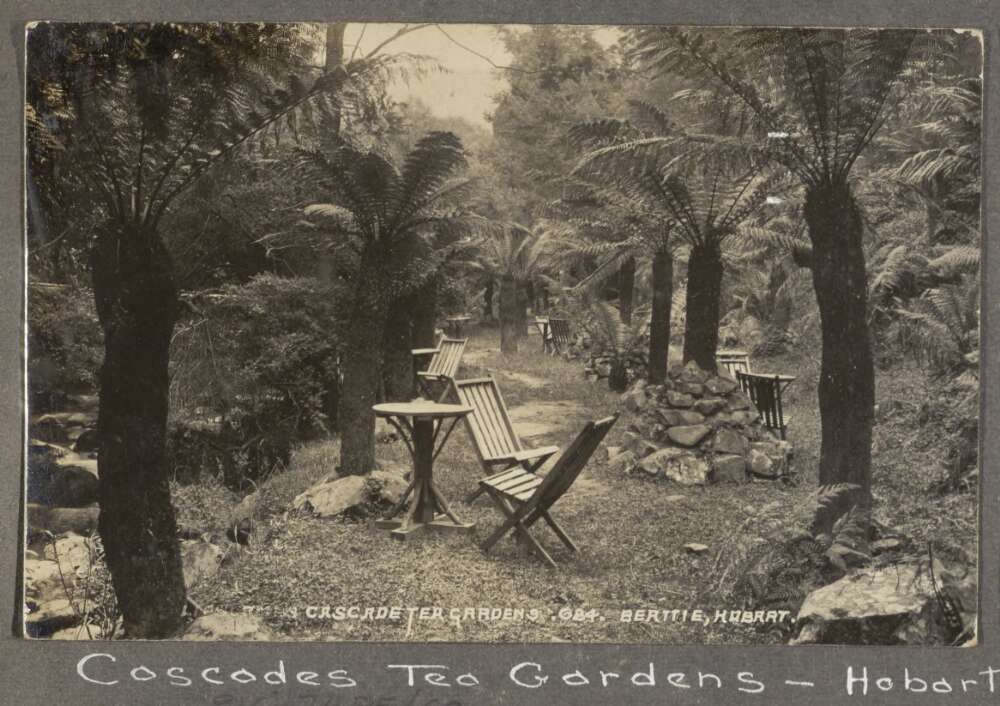
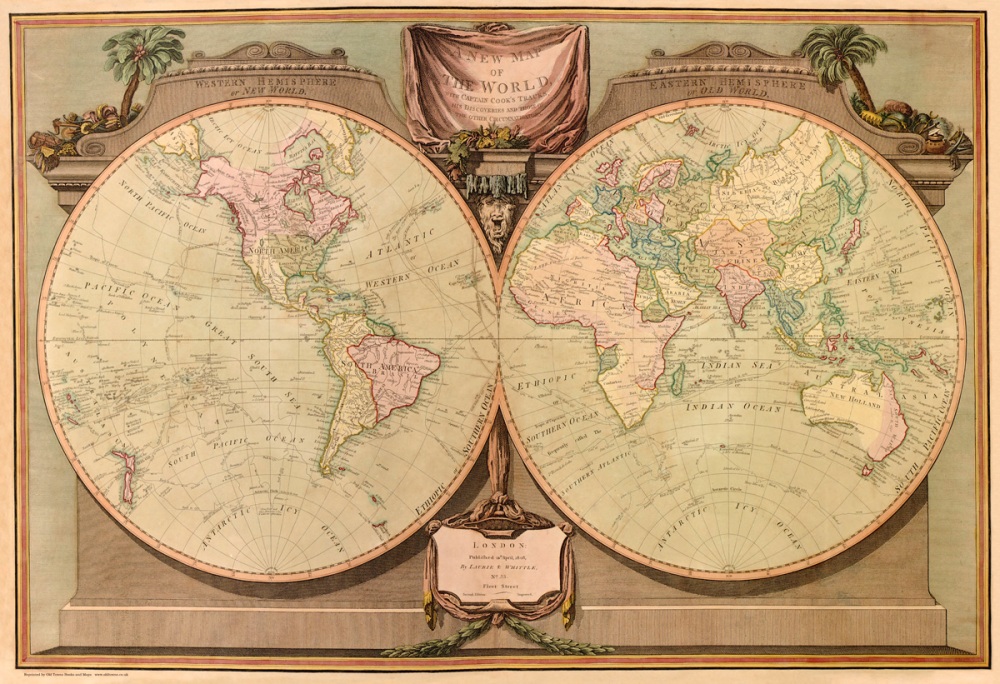
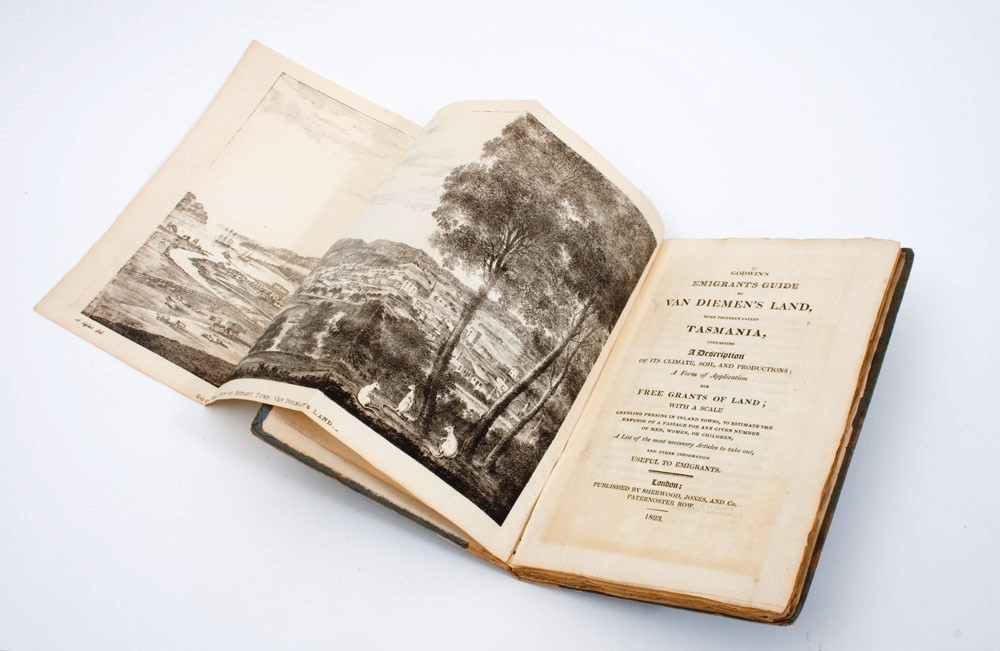
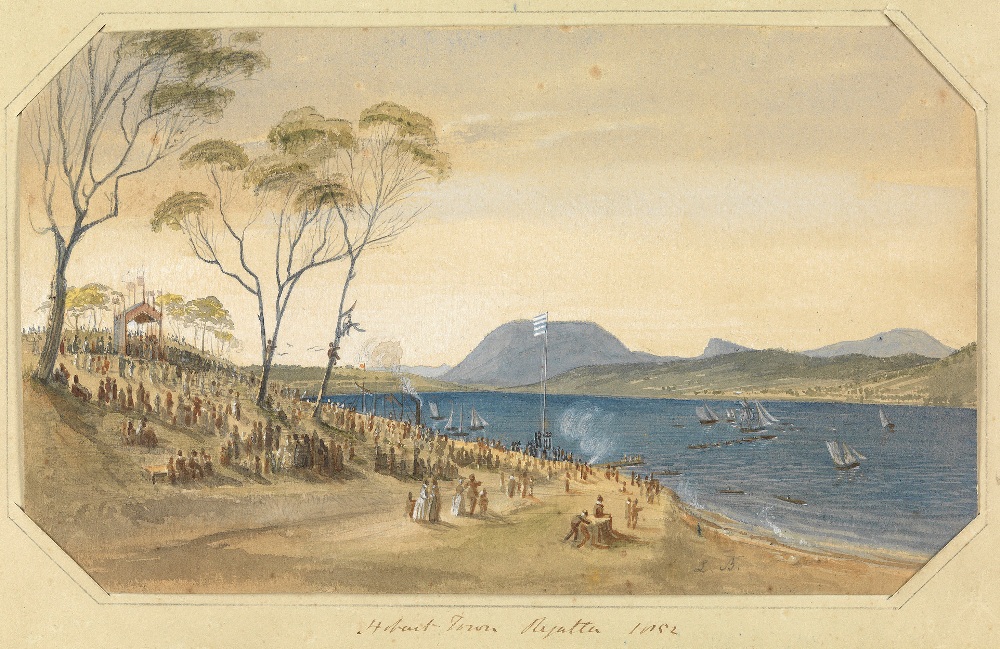
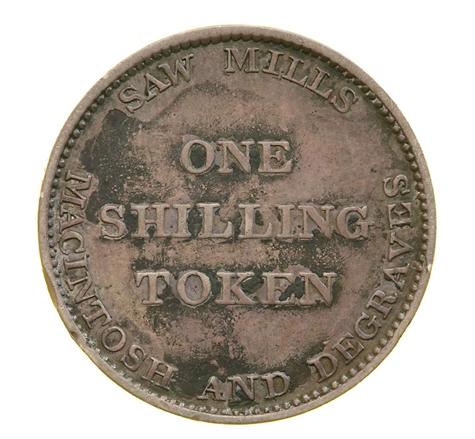
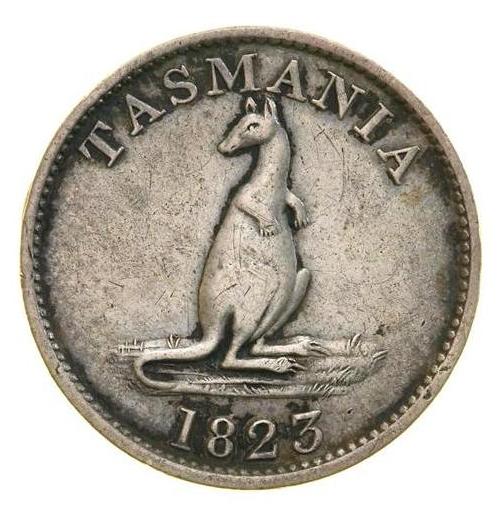
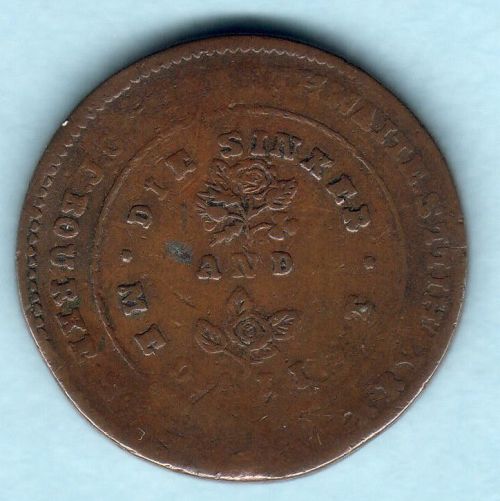
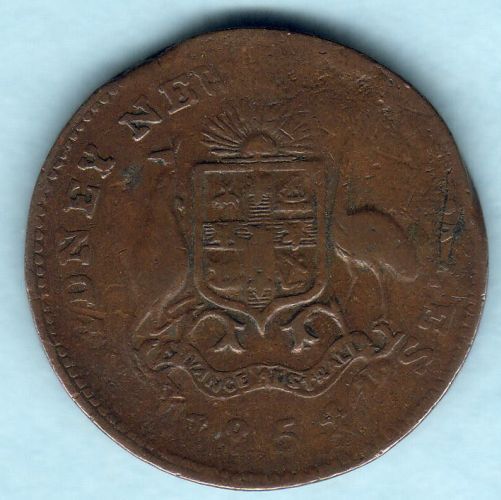
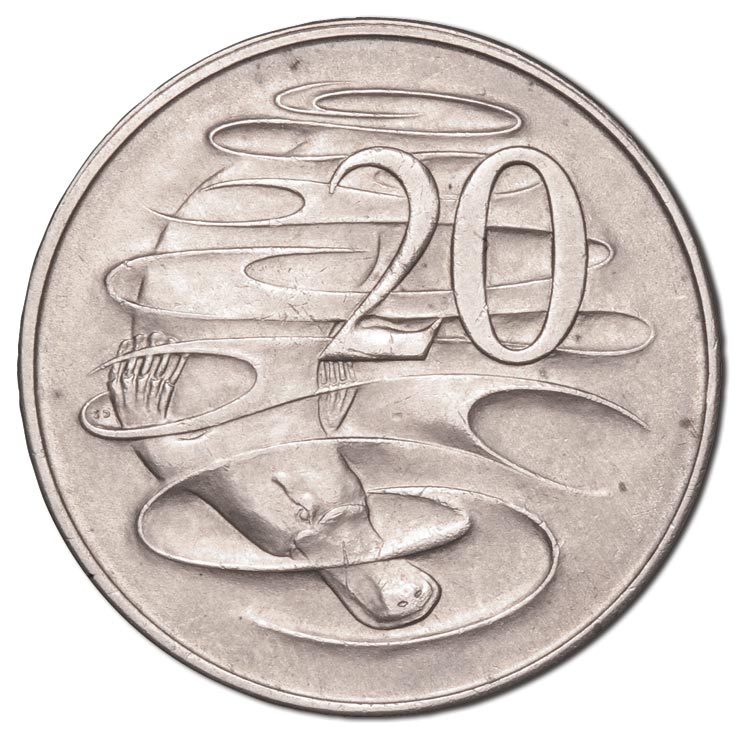
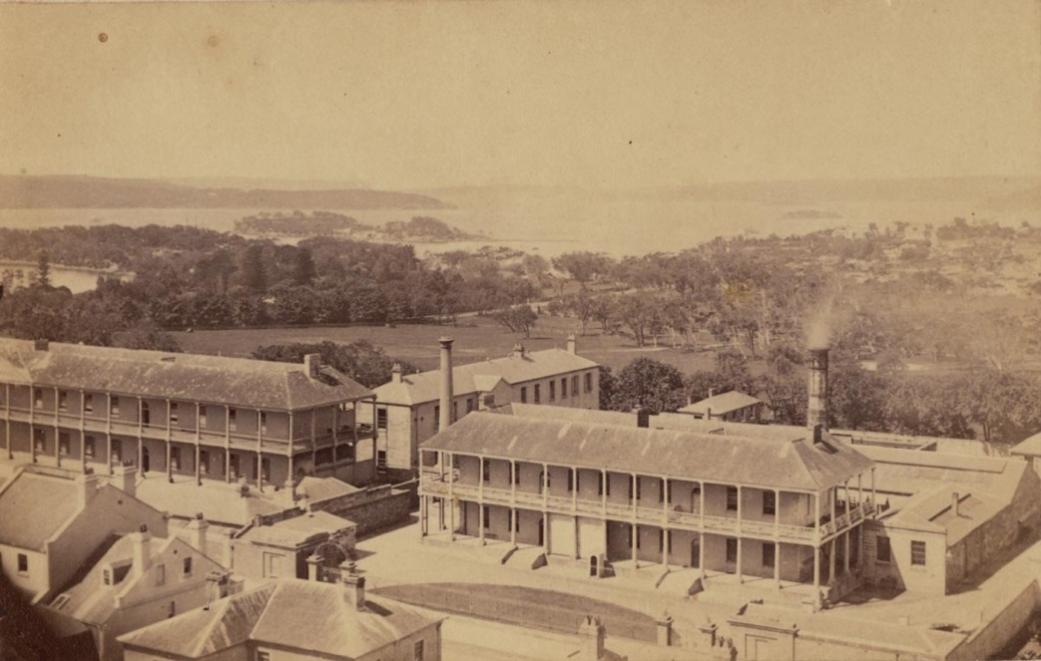
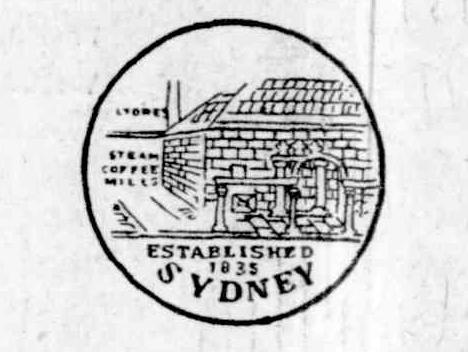
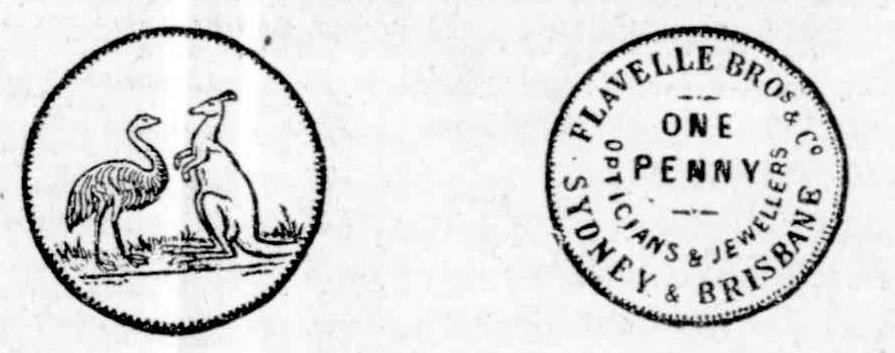
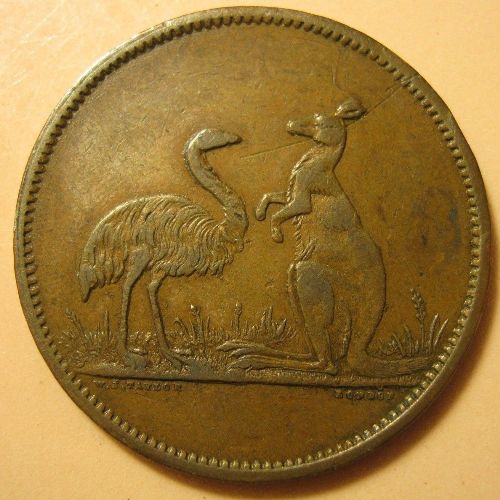
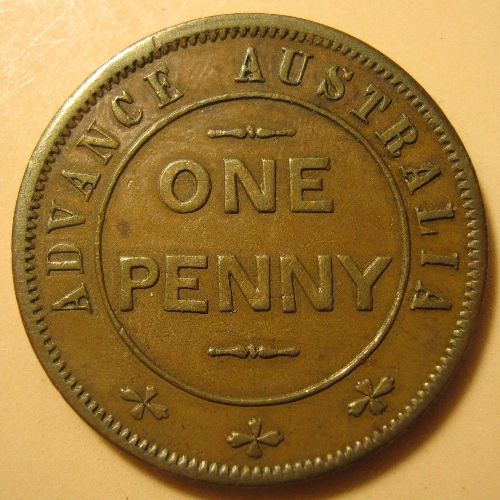
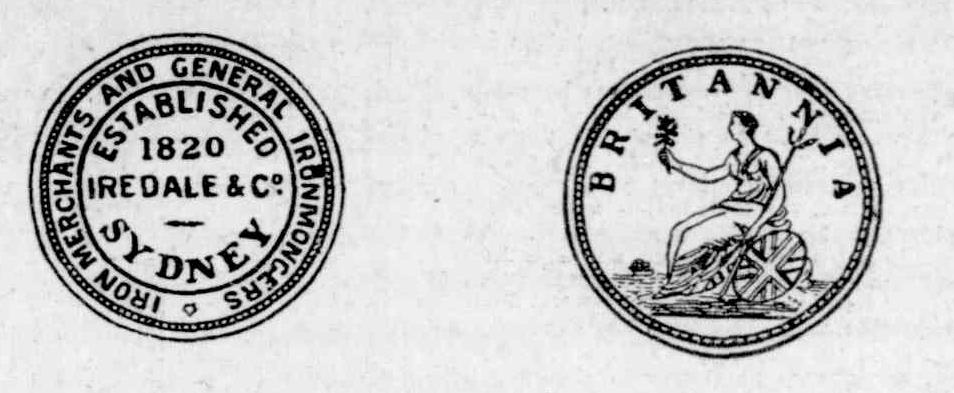
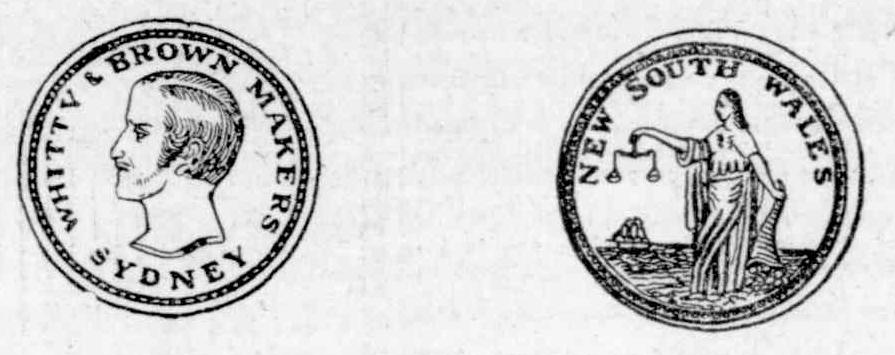
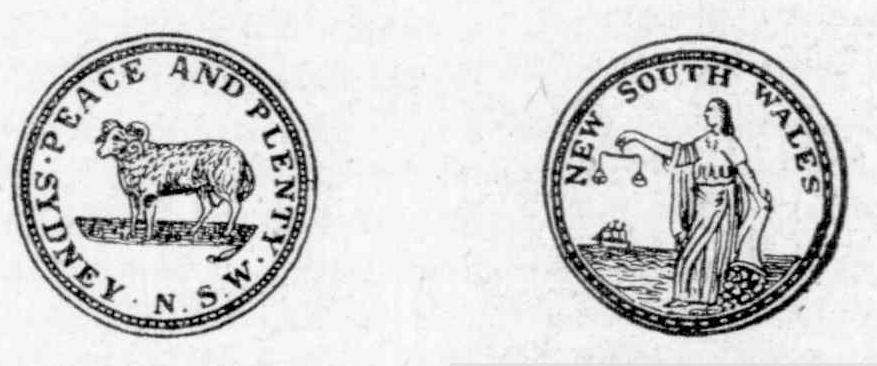
.jpg?timestamp=1480382979874)
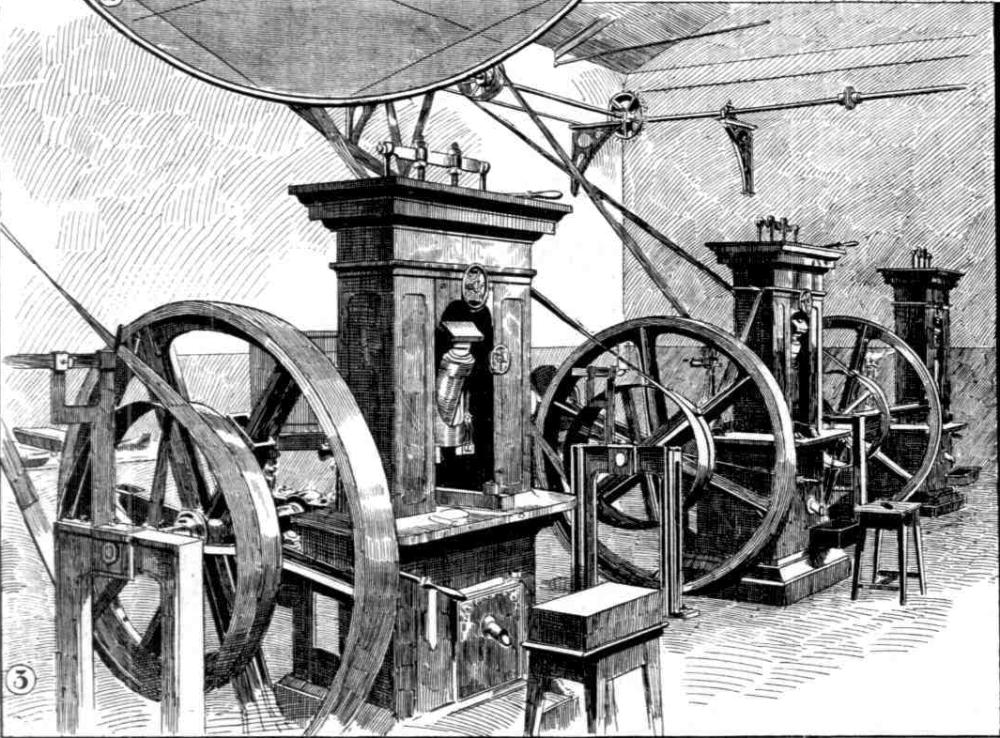
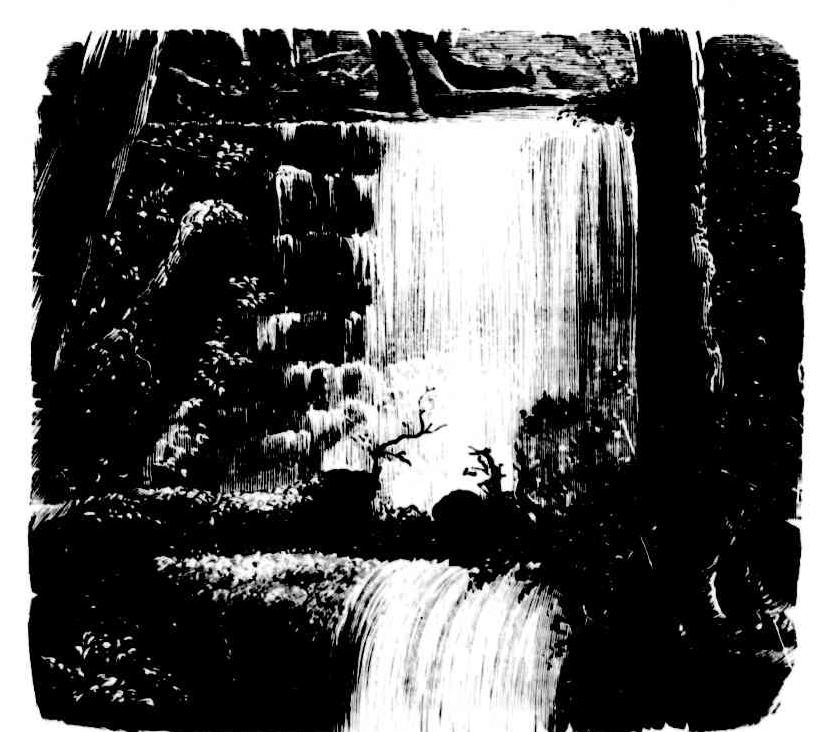
 However this may be, we know from what history tells us of the achievements of Peter Degraves in Van Diemen's Land that he was possessed of all the qualifications essential to in sure success in the land of his birth. He had served an apprenticeship with the celebrated engineer, Mr.. John Rennie, who, amongst other, monuments of his ability, constructed the Plymouth breakwater and the Southwark and Waterloo bridges over the Thames. In addition to his engineering attainments, Mr.. Degraves was an architect of no mean order, and an able draughtsman. He had, moreover, a knowledge of surveying or land measurement, as it was then generally called, and was an experienced mathematician well versed in the science of Algebra, and especially skilled in making calculations and estimating quantities and values of extensive works.
However this may be, we know from what history tells us of the achievements of Peter Degraves in Van Diemen's Land that he was possessed of all the qualifications essential to in sure success in the land of his birth. He had served an apprenticeship with the celebrated engineer, Mr.. John Rennie, who, amongst other, monuments of his ability, constructed the Plymouth breakwater and the Southwark and Waterloo bridges over the Thames. In addition to his engineering attainments, Mr.. Degraves was an architect of no mean order, and an able draughtsman. He had, moreover, a knowledge of surveying or land measurement, as it was then generally called, and was an experienced mathematician well versed in the science of Algebra, and especially skilled in making calculations and estimating quantities and values of extensive works.
